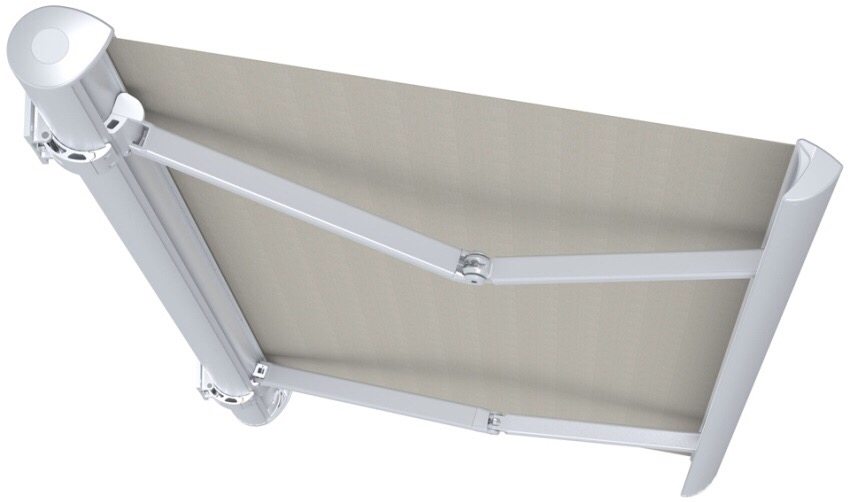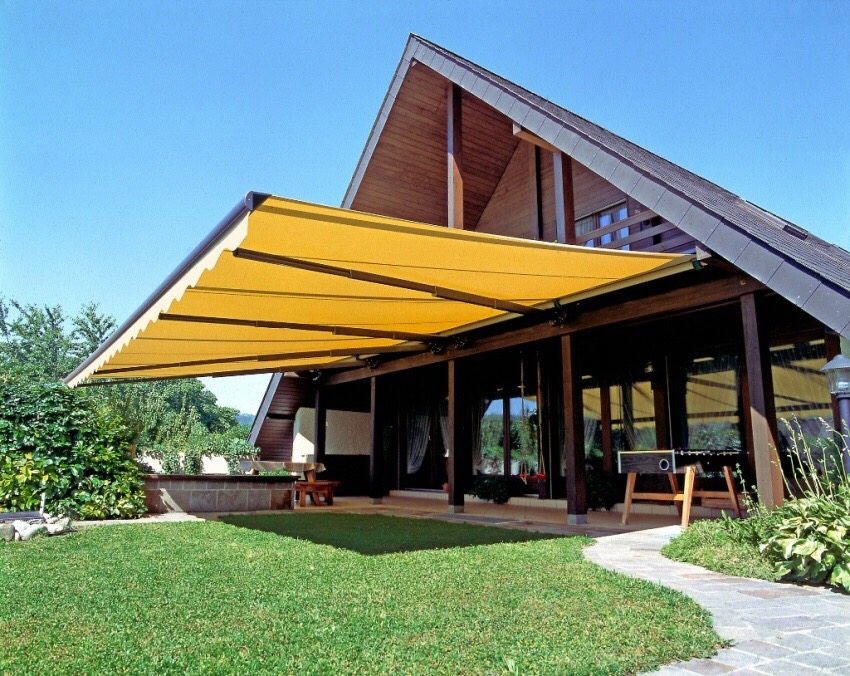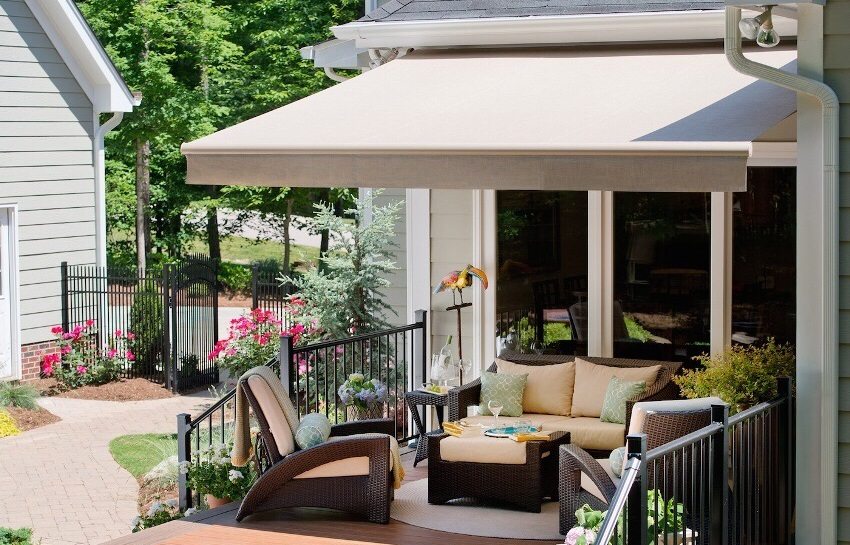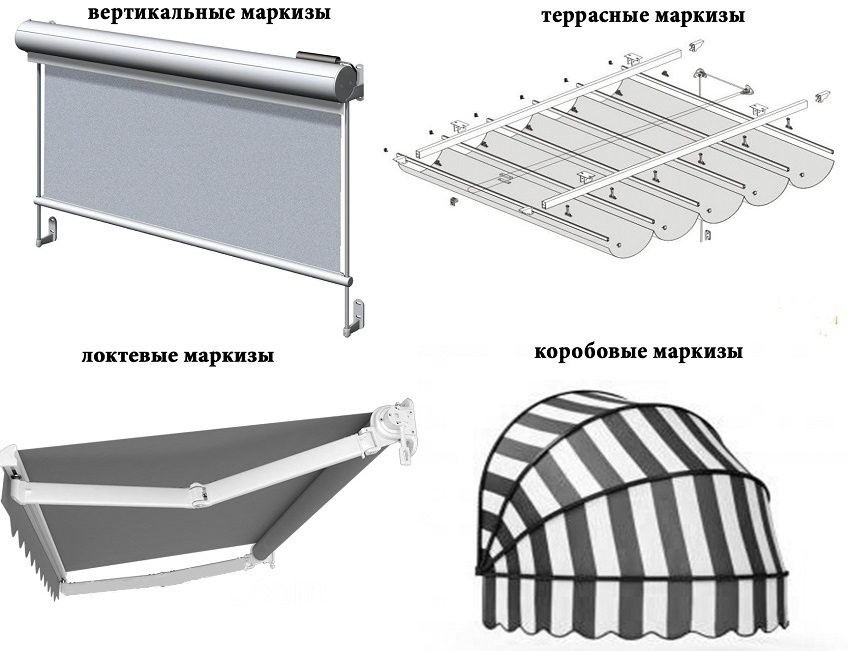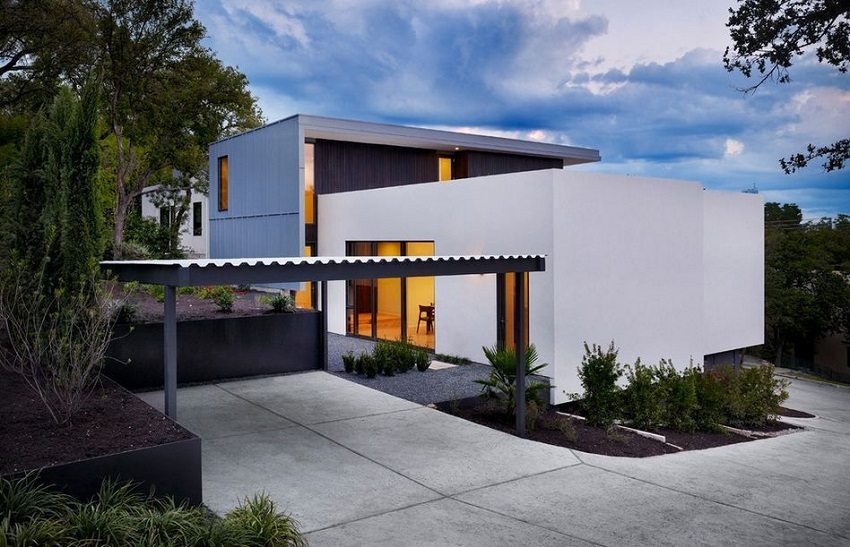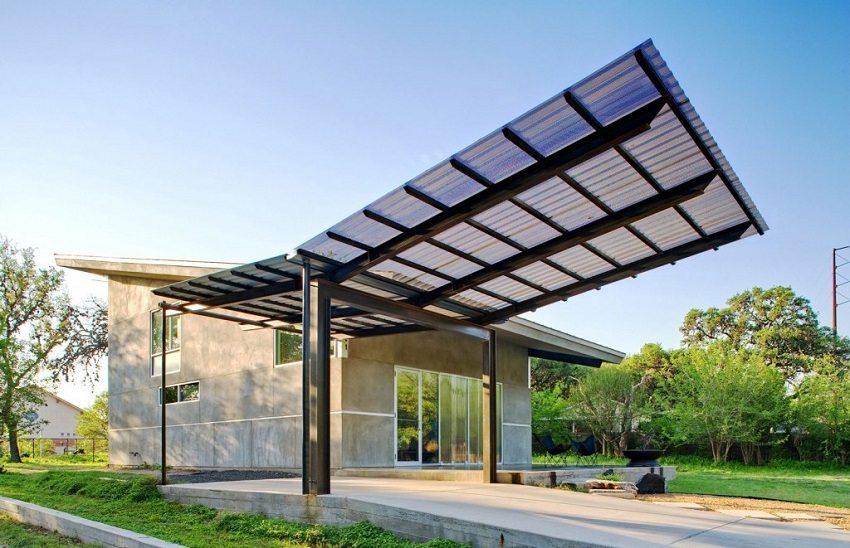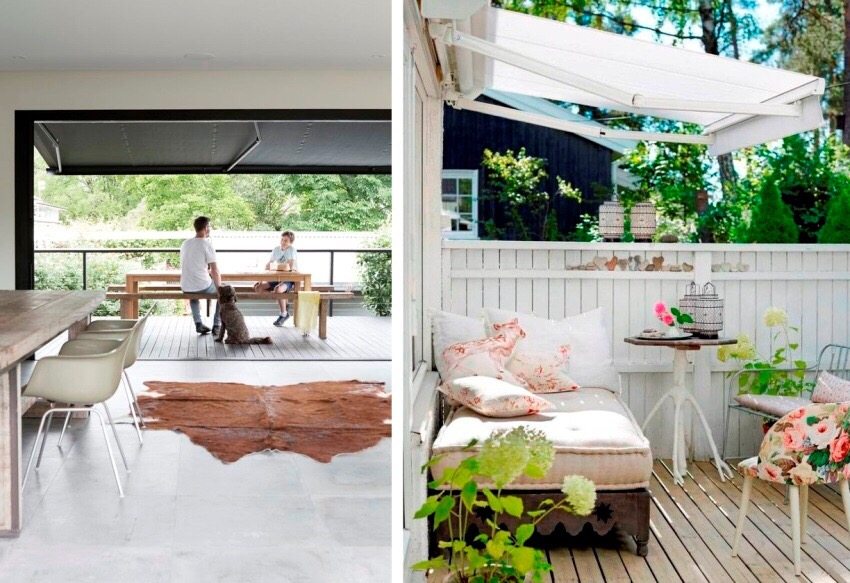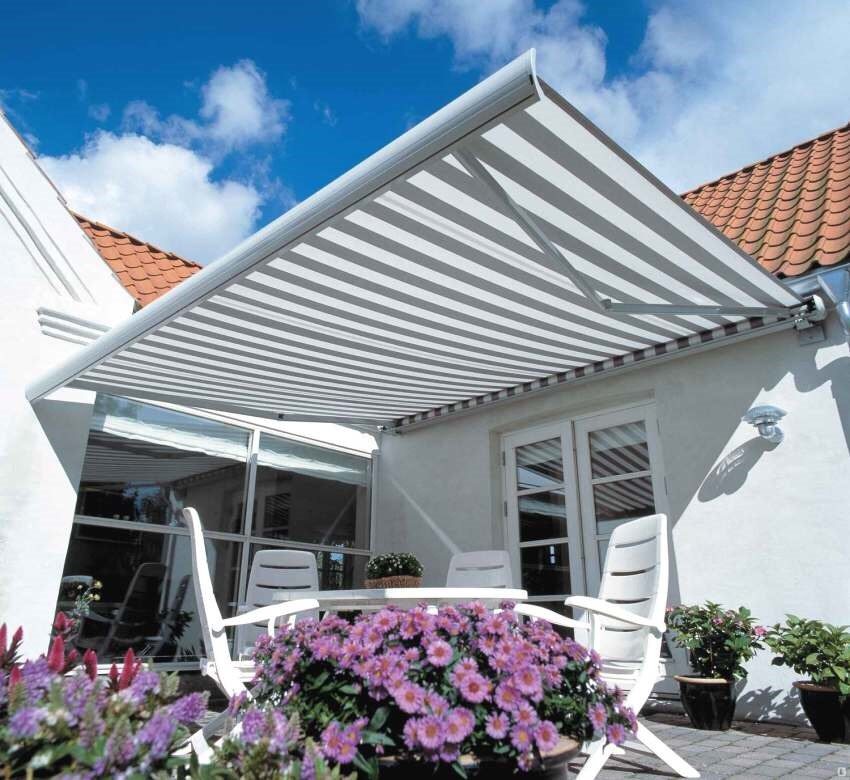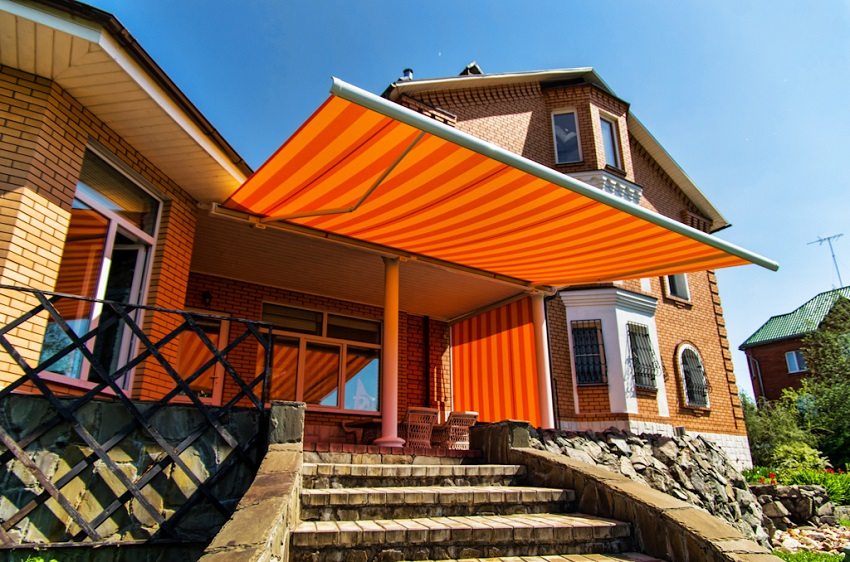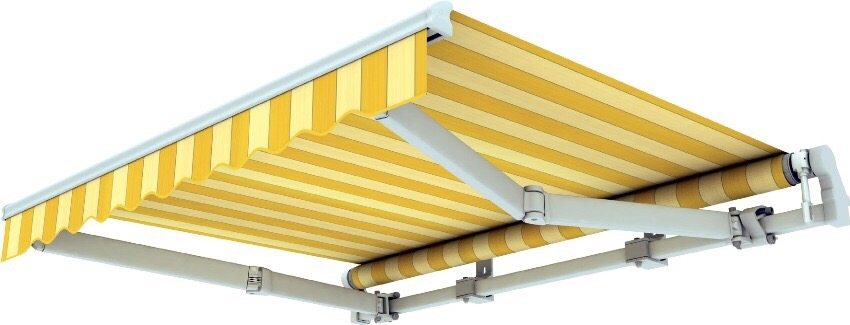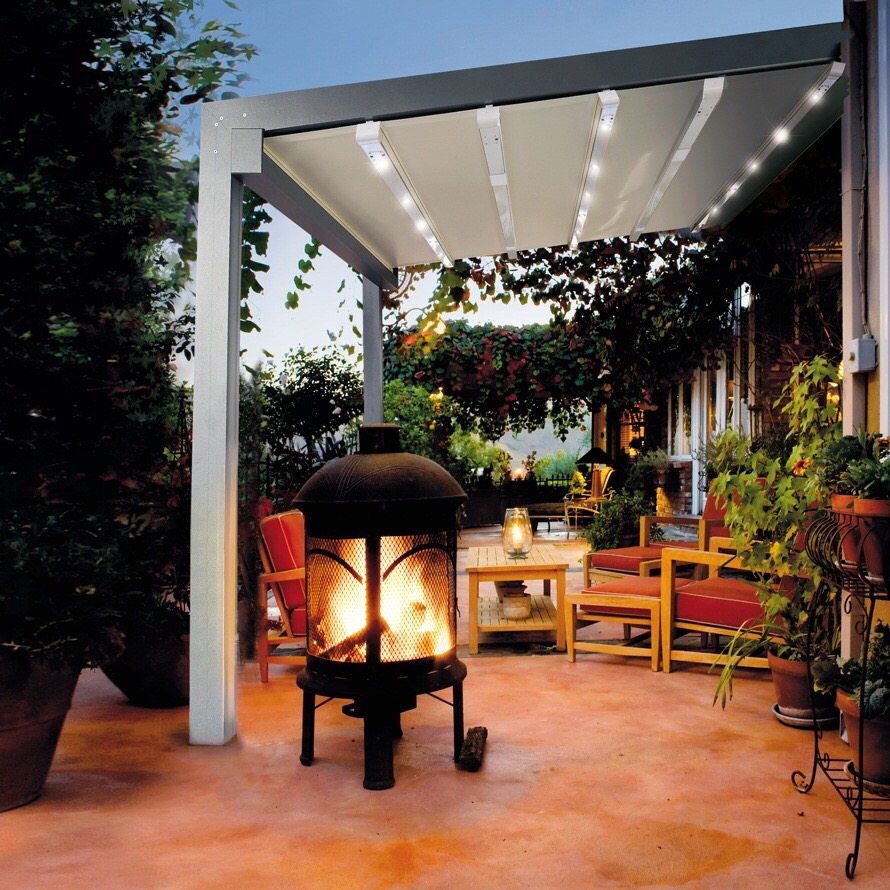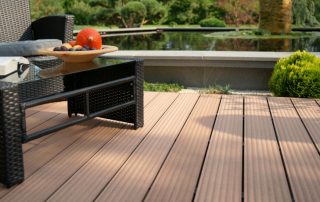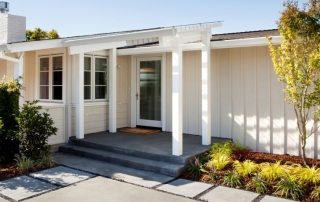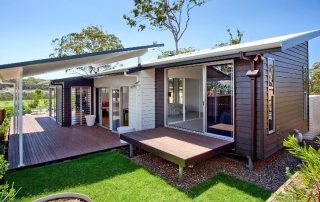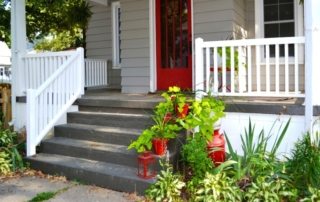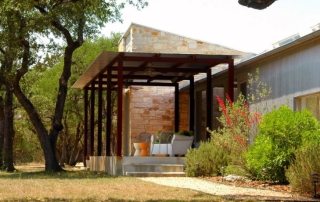Awnings and awnings for a terrace and a veranda are an opportunity to give a building a noble look and at the same time make rational use of the adjacent territory. Depending on the wishes and financial capabilities of the owners of the house, there are many different options for arranging a canopy and awning for a terrace and veranda. Consider all possible design options, their advantages, disadvantages and features.
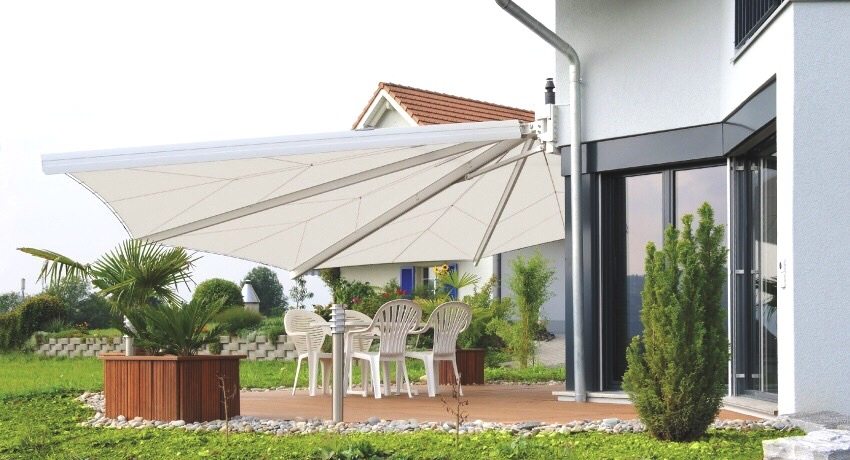
The Venetian Marquis Francisco Borgia in the 15th century was the first to invent the structure, which today is called a fabric canopy or marquis.
Content [Hide]
Awnings and awnings for the terrace and veranda: design features
Today the word "marquise" is a much broader concept than a few years ago. Retractable fabric structures and vertical frameless partitions, designed to protect their wearer from strong wind and sunlight, are now also called this term. Due to their wide functional range, as well as the ability to significantly decorate the local area, these automated awnings have gained wide popularity among owners of country houses.
What is the difference between the canopy we are used to and the awning? While a conventional awning has a rigid, fixed, fixed frame, the opening level of the awning can be adjusted as desired. Consider what features should be considered if you decide to mount the structure yourself:
- the awning is attached to the wall of the building on one side;
- to fold or twist it does not require dismantling the system;
- the functions of the finished system are fully automated.
Awnings for the veranda - choice of material
The most common material used for the manufacture of awnings and awnings is acrylic canvas. With excellent water repellency, wind resistance and anti-reflective properties, this fabric has an aesthetic and elegant appearance. In addition, the temperature range for using acrylic is very wide.
The price of acrylic canvas is determined mainly by the country of origin. The cost of a standard 1.5-meter roll on average can be from 800 to 1200 rubles per 1 running meter.
Polyester canvas is also a very common material for creating awnings and awnings due to its cost and characteristics. This fabric has increased strength thanks to the polyurethane impregnation.Because of this, it is often used for car and parking tents.
The cost of one running meter of Korean-made polyester cloth ranges from 250 to 320 rubles. Fabric made in the USA is considered to be of higher quality, and prices for the same amount of material start at 900 rubles.
PVC cloth is another way to decorate the awning. Smooth, glossy surface will perfectly decorate your local area. In addition, this is the most budgetary option of all possible. Prices for this type of fabric start at 150 rubles per running meter. PVC is highly durable, so that the transmission of snow or water is excluded. In this case, the canopy will not sag under the weight of the accumulated precipitation on it. The range of permissible temperatures for use is very wide - from -30 to 50 ° C.
To improve the quality characteristics of PVC-cloth used for covering awning awnings, it is treated with specialized impregnations:
- Teflon coating improves moisture repellency, while creating a protective layer on the fabric from dirt and UV rays. Teflon-impregnated material will not stretch over time, will not wrinkle or wrinkle;
- antiseptic coating makes the fabric more durable, preventing the formation of mold and various kinds of fungi on the surface;
- UV filters are designed to provide travelers with maximum comfort in sunny weather, giving the fabric anti-reflective properties.
Varieties of awnings and awnings for terraces and verandas
Awnings and awnings for terraces and verandas are different and, depending on the mechanism of the structure, the way of control and the intended purpose, are divided into several groups.
Terrace and veranda awnings
One of the options for decorating and protecting the terrace from wind and rain are awnings. Depending on the shape of the structure and appearance, they can be divided into the following types: attached and detached.
Attached awnings are mounted close to the building, thus forming a space close to one side. This option is most often used to create a terrace near the entrance to the house.
Freestanding awnings - in essence, just a roof, standing on several supports, they are often used to create a parking space for a car.
In shape, awnings are distinguished by straight, inclined and complex awnings. The first option is the simplest and cheapest, it is a single plane fixed on supports. The second design is more difficult to manufacture and install, but it allows rainwater or melting snow to drain away without accumulating on the roof. Complex structures are curved and are used to create an unusual exterior on the site.
Almost anything can serve as a material for making a canopy. The main thing is that its characteristics ensure that the roof is resistant to external conditions. The most common options are:
- professional flooring;
- polycarbonate;
- metal tile;
- slate;
- plexiglass.
At the same time, the frame can be made of wood, metal, concrete, and even brick and stone.
Making a canopy with your own hands is quite simple. And professional flooring is the most suitable option for this. This popular material is easy to purchase in the store and does not require special skills or equipment to work with it. Installation of the canopy takes place in several stages:
- points of support are determined, and in these places pits 50-60 cm deep are dug;
- install vertical supports and fill them with concrete;
- after about a week, when the concrete hardens, horizontal beams are mounted;
- a crate of pipes is attached to the horizontal beams, which will hold the sheets of corrugated board;
- with the help of self-tapping screws, the corrugated board is laid on the crate.
Related article:
Sheds in the courtyard of a private house: photo of light and graceful designs. Forms and construction of awnings. Photo of carports. A canopy from a profile pipe. Decking for covering awnings.
Thus, with a minimum cost of effort and money, you can equip a canopy with your own hands that will protect you from the sun, rain and snow on your site.
Types of awning designs
Depending on the intended purpose, there are showcase (window), greenhouse (balcony), pergola and vertical awnings. Let's consider each type of canopy in more detail.
Showcase (window) the awning is a vertical external curtain. It is designed to protect the premises from direct sunlight. Externally, it is a vertical canvas with a visor in the upper part of the structure, which allows you to move the vertical of the canvas at a distance from the window frames. There are options without a visor.
The amount of sunlight penetrating can be easily controlled by opening or closing the curtain wall. The design of such an awning is mostly standard and consists of support brackets located in the middle of the height of the window opening. The distance from the awning to the slopes is on average 10-15 cm.This is done so that in the open form the canvas protrudes from the wall at a distance of 60-100 cm.
Terrace awnings have a different design primarily because of their size and windage. They are often called elbow awnings, since in this case you cannot do without a rigid structure in the form of a beam, which is attached to the wall. Due to its size, such an awning has to experience significant bending loads. In order for the rigid frame to withstand all this, bearings are additionally used in the creation of the structure.
Depending on your desire, using a variety of materials and racks of various designs, you can create summer gazebos, rotundas or belvederes, which will become real masterpieces of landscape architecture.
Greenhouse (balcony) awnings - these are structures of two or three sections, which create a "sloping" roof with a canopy. To control the penetration of sunlight, a special longitudinal beam is used, located in the middle of the departure. With its help, the awning and the visor can be raised and lowered.
Pergola awnings used to create summer awnings around the house, open verandas, pergola, rotunda, patios and other most popular types of mobile suburban architecture. A feature of this design is the presence of two or more additional supports designed to increase the strength of the structure and improve its quality characteristics when exposed to wind load.
Vertical awnings - a simple structure, which is a vertical wall. They are used to create mobile gazebos, as well as to fence pergolas.
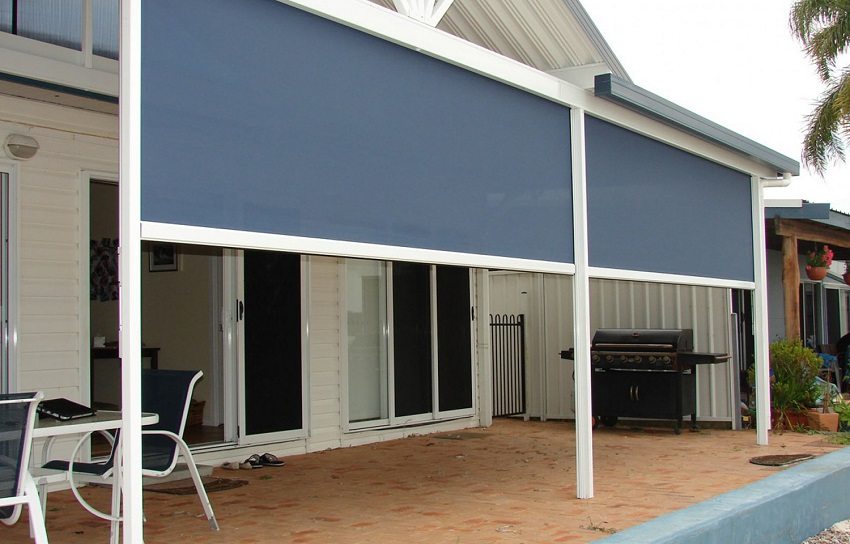
Vertical awnings will be an excellent alternative to walls, sheltering neighbors from gusts of wind and prying eyes
Awning control mechanisms
Depending on the mechanism of the structure, the following types of awnings are distinguished: basket, lever-roll and awning.
Lever-roll mechanism equipped with two folding brackets. According to the principle of the device, they resemble hands that unwind a web wound on a special roller. Rotating, the mechanism dissolves the awning and opens the awning.
Basket mechanism, or as it is also called domed, is a structure consisting of several arcs that perform a supporting function. Arcs can be of any shape: round, oval, rectangular.They can be of any height and length, but they are all united by a common axis of rotation. Such a system is formed using a lanyard mechanism - all arcs are connected with a special cord, which is fixed at the very bottom. Thus, by pulling on the cord, the awning can be assembled, and if the cord is released, the structure will open.
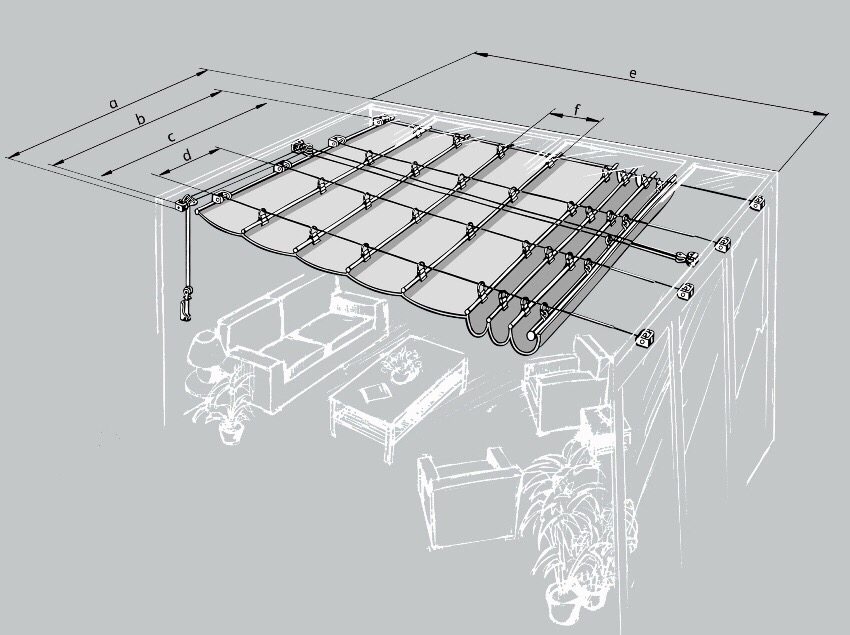
Dimensions of the awning above the veranda: a - the width of the veranda, b - the total width of the awning, c - the width of the canvas, d - the distance between the fixings (scallops), f - the distance between the slats
Marquisolette - a mechanism designed to ensure maximum stability of extended structures to strong winds. Its design consists of two parts: the upper one, on which the canvas is placed vertically, and the lower one, on which the awning forms a visor. The ratio of parts of the structure can be easily adjusted manually.
Depending on the way the awning is controlled, the following options can be distinguished:
- manual drive;
- electric drive;
- remote control.
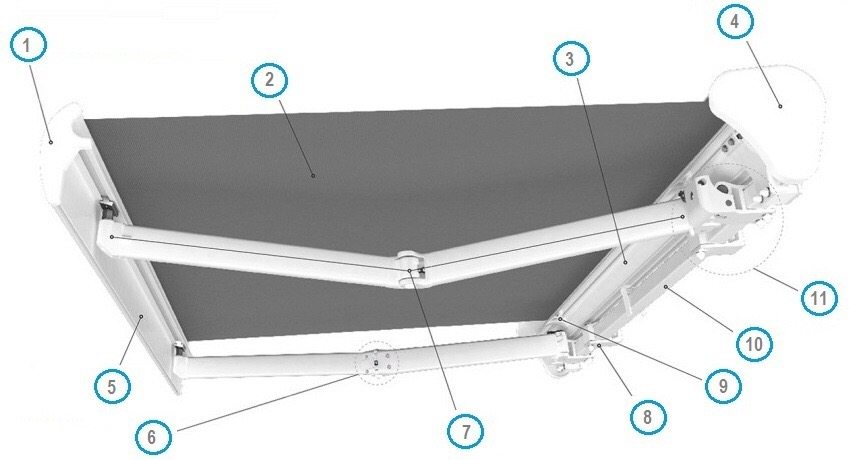
The design of the elbow cassette awning: 1 - plastic plugs, 2 - cloth sheet, 3 - fabric cassette, 4 - plastic decorative plugs, 5 - main profile, 6 - silicone dampers, 7 - awning elbows, 8 - mounting brackets, 9 - mechanism finishing the cassette, 10 - steel supporting profile 40x40 cm, 11 - plastic decorative plugs
Useful advice! Remote controls with all kinds of sensors have been developed especially for lovers of comfort. This way you can control the position of the awning, taking into account the strength of the wind and the intensity of the sun's rays.
Proper care of your awning
In order for your awning to serve you as long as possible, it is recommended to comply with the following operating rules:
- in cold weather, when the awning is not in demand, it is recommended to "preserve" the structure with a specially designed cover, or contact specialists to dismantle the structure intact and safe;
- at least once a year, it is necessary to carry out maintenance of the structure: change the lubricant (especially for retractable awnings) and adjust all elements of the product;
- it is forbidden to hang various kinds of objects on the awning that may harm or provoke the fall of the structure or its parts;
- if your awning model does not have a sensor that regulates the strength of the wind and, according to the conditions, folds the canvas, then the structure requires constant supervision. So, when leaving home for a long time, it is necessary to roll up the awning so that it is not blown off by the wind during your absence.
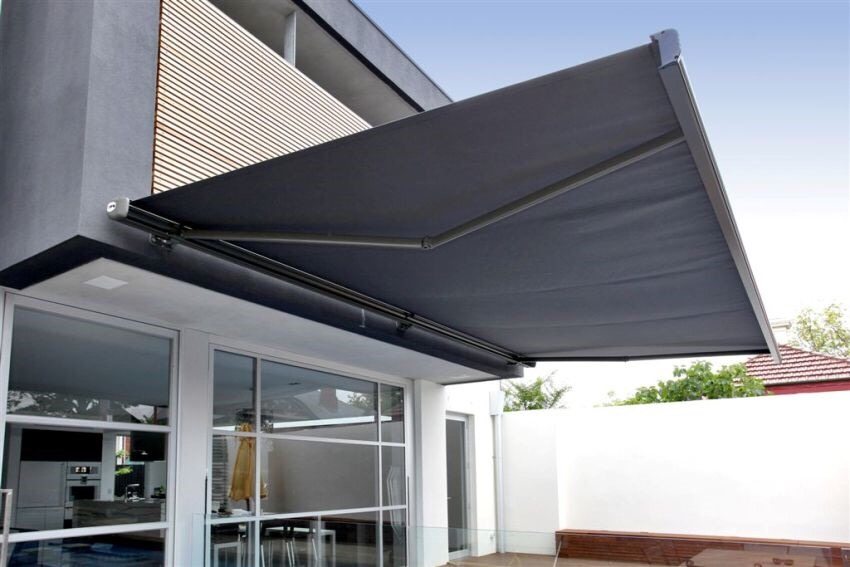
Wide elbow awning over terrace of a private house
Useful advice! It is strongly not recommended to try to disassemble the structure yourself. It is based on powerful springs that, if handled carelessly, can cause serious injury.
DIY awning creation step by step
Like any other simple construction of this type, the awning can be made independently. To do this, you will need to set aside a few hours of free time, purchase the constituent components and, of course, have a set of necessary tools with you. Consider the step-by-step instructions for installing a conventional window awning:
- first of all, it is necessary to make a schematic drawing of the future awning, taking into account its dimensions, the height from the floor to the lower and upper points of the canopy canvas, the width of the awning and the amount of its extension from the wall;
- according to the drawing, purchase material for the canopy. For independent work, the best option is acrylic fabric. In addition, it has all the necessary technical characteristics;
- choose and purchase the material from which the frame will be made. Here the undisputed leader is aluminum pipes, since they are very lightweight, but at the same time strong enough to withstand the load created by the awning, and do not corrode.Although you can often find frames made of enameled steel tubes;
- purchasing a folding mechanism and connecting it to the frame and canvas is the best option for solving all functional problems;
- after all the components are purchased, you can proceed with the installation. According to the scheme, the frame is assembled and the fabric is cut out. The folding mechanism is attached to the wall and synchronized with the frame and canvas.
Thus, if you use a ready-made folding mechanism, you can easily make an awning yourself. On average, this takes 6 to 8 hours.
The frame for the awning can be not only metal, but also wooden. In this case, a bar is used, which is treated with a special antiseptic. It reduces the level of destructive effects of external factors. Then the tree must be painted or opened with ship varnish. However, even if these conditions are met, the wooden frame cannot be called very durable. One way or another, the tree is subject to drying out and moisture absorption. And insects, despite all preventive measures, can cause significant damage to the material.
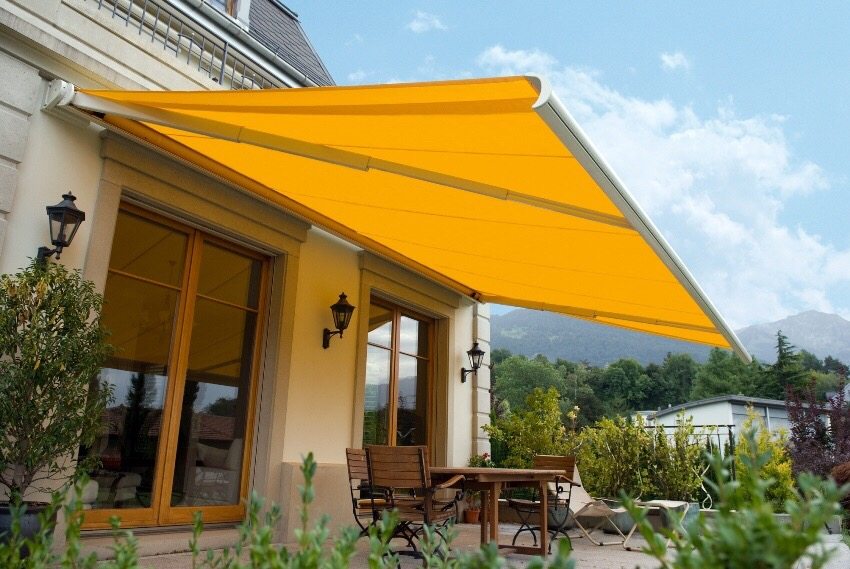
With the help of the awning, you can not only protect your house and summer terrace from the sun, but also decorate your yard
Awnings and awnings for a summer residence are not only a wonderful decoration for your site, but an opportunity to use the territory adjacent to the house with benefit. No matter how great your financial capabilities are, the price of an awning for a terrace and a veranda will please you anyway. By creating or choosing ready-made unusual designs, you can give your property an original appearance and completely new functional qualities.
